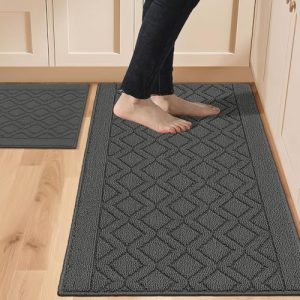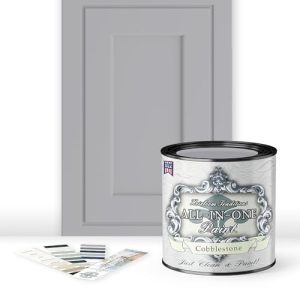Are you ready to transform your kitchen without breaking the bank? Learning how to cut kitchen cabinets yourself can save you time and money while giving you full control over your renovation.
Whether you want to resize cabinets for a perfect fit or customize them to match your style, this guide will walk you through each step clearly and confidently. By the end, you’ll have the skills to make precise cuts that look professional and fit seamlessly into your space.
Keep reading, and let’s make your kitchen upgrade easier than you ever thought possible.
Tools Needed
Cutting kitchen cabinets accurately requires the right set of tools. Having these tools ready before you start saves time and reduces frustration. Let’s look at the essential items you’ll need to make clean, precise cuts and keep yourself safe.
Essential Cutting Tools
First, a quality saw is your best friend. A circular saw works well for straight cuts, while a jigsaw handles curves and notches easily.
Don’t forget a measuring tape and a pencil. Precise measurements and clear markings ensure your cuts are spot-on.
A straight edge or a carpenter’s square helps guide your saw for clean lines. Clamps are also vital—they hold your cabinet firmly in place as you cut, preventing slips.
- Circular Saw:Best for straight, long cuts.
- Jigsaw:Ideal for curves and detailed cuts.
- Measuring Tape & Pencil:For accurate measurements and marking.
- Carpenter’s Square:Keeps your lines straight.
- Clamps:Secure your workpiece during cutting.
Safety Gear
Never underestimate the importance of safety gear. Protecting your eyes with safety goggles prevents dust and debris from causing harm.
Wear ear protection to guard against loud saw noises. Gloves can protect your hands but make sure they fit well so you don’t lose dexterity.
Consider a dust mask to avoid inhaling fine particles, especially when cutting MDF or plywood. Would you want to risk your health for a quick job?
- Safety Goggles:Protect your eyes from flying debris.
- Ear Protection:Prevent hearing damage from loud tools.
- Gloves:Shield your hands while maintaining control.
- Dust Mask:Keep your lungs safe from dust particles.
Preparing Cabinets
Preparing your kitchen cabinets before cutting is a crucial step that sets the foundation for a smooth and precise project. Taking the time to properly get your cabinets ready can save you from costly mistakes and frustration later on. Focus on organizing your workspace and ensuring that every part of the cabinet is easily accessible and ready for modification.
Removing Doors And Hardware
Start by carefully removing the cabinet doors. Use a screwdriver to unscrew the hinges, and place the screws and hinges in a labeled container to avoid losing them. Removing doors gives you better access to the cabinet box, making it easier to measure and cut without damaging the doors.
Take off all hardware like handles, knobs, and drawer pulls. This prevents scratching or damage during the cutting process. Have a small tray or box nearby to keep all these small parts organized.
Measuring And Marking
Accurate measurements are your best friend. Use a tape measure to double-check the dimensions of the cabinet before marking where you plan to cut. Measure twice to avoid costly mistakes.
Use a pencil to mark the cut lines clearly. Draw light, straight lines along the areas you want to cut, and then go over them to make sure they’re visible. A straight edge or ruler helps create precise lines, which guide your saw for a clean cut.
Ask yourself: Have I considered all clearances and obstacles near the cut? Planning your cut lines carefully now prevents surprises later. Also, think about the direction of the wood grain—cutting with the grain can result in cleaner edges.
Cutting Techniques
Cutting kitchen cabinets requires precision and the right technique. Choosing the proper cutting tool affects the final look and fit. Each tool offers unique benefits for different cuts. Safety and accuracy remain the top priorities during the process.
Using A Circular Saw
A circular saw is perfect for straight, long cuts. It works well for trimming cabinet sides and shelves. Use a guide or straight edge to keep cuts clean. Adjust the blade depth to match the thickness of the wood. Always wear safety glasses and keep hands away from the blade.
Using A Jigsaw
A jigsaw is ideal for curved or irregular cuts. It allows you to follow detailed patterns and shapes. Choose a fine-toothed blade for smooth finishes on cabinet doors. Move the saw slowly to avoid splintering the wood. Clamp the cabinet piece firmly before cutting for stability.
Using A Table Saw
A table saw provides the most control for precise cuts. It is best for ripping large panels or cutting cabinet parts to size. Set the fence to guide your cut and maintain straight lines. Use a push stick to keep fingers safe near the blade. Ensure the blade is sharp for clean edges and less tear-out.
Ensuring Clean Cuts
Ensuring clean cuts is crucial when working on kitchen cabinets. A sloppy cut can ruin the appearance and even weaken the structure. Paying attention to the right tools and techniques will help you achieve smooth, professional results every time.
Choosing The Right Blade
The blade you pick makes a big difference in the quality of your cuts. For cabinet wood, use a blade with more teeth—typically 60 to 80 teeth on a circular saw blade. This helps reduce splintering and leaves a smoother edge.
Think about the material you’re cutting. Melamine or laminate cabinets need a special fine-toothed blade to avoid chipping. I once tried a general-purpose blade on a melamine door and ended up with jagged edges that needed extra sanding—wasting time and effort.
Using Guide Rails And Clamps
Keeping your cuts straight is easier with guide rails. They act like a fence, guiding your saw along the right path without wobbling. You don’t have to be perfect with freehand cuts, but the rails help you maintain consistent lines.
Clamps hold your cabinet firmly in place. If the piece moves while cutting, even a sharp blade won’t save you from an uneven edge. Secure the cabinet on a stable surface and use clamps to prevent shifting before you start sawing.
- Set up your guide rail along the marked line.
- Clamp the rail and cabinet to your workbench.
- Double-check measurements before cutting.
Have you noticed how much easier the job gets when your materials don’t move? Proper setup saves you from costly mistakes and frustration.
Finishing Edges
Finishing edges is an important step after cutting kitchen cabinets. It helps protect the wood and gives a clean, polished look. Proper finishing also prevents damage from moisture and daily use. Taking time to finish edges well will improve the cabinet’s durability and appearance.
Sanding And Smoothing
Start by sanding the cut edges with fine-grit sandpaper. This removes splinters and rough spots. Sand gently in one direction for the best results. Use a sanding block or sponge to keep the surface even.
After sanding, wipe the edges with a damp cloth. This removes dust and prepares the surface for sealing or painting. Smooth edges feel better to touch and look neat.
Sealing And Painting
Apply a wood sealer or primer to the sanded edges. This protects the wood from moisture and stains. Use a small brush for precise application along the cut lines.
Once the sealer dries, paint the edges to match the cabinet. Choose a durable paint designed for wood surfaces. Apply thin, even coats for a smooth finish. Allow each coat to dry completely before adding another.
Reassembling Cabinets
Cutting kitchen cabinets requires precise measurement and the right tools. Safety goggles protect eyes from flying debris. Use a saw to make clean, straight cuts. Always measure twice to ensure accuracy. This careful approach helps maintain the cabinet’s structure and appearance.
Reassembling kitchen cabinets brings your project to a satisfying close. It involves putting everything back together after you’ve made your cuts. This is a crucial step to ensure your cabinets look and function well.Reattaching Doors And Hardware
First, gather your tools and cabinet parts. Begin by aligning the doors with the cabinet frames. Use a screwdriver to secure the hinges to the frame. Ensure the hinges are tight to avoid sagging doors. Next, attach handles and knobs. Make sure they are straight and secure. This adds the final touch to your cabinet doors.Final Adjustments
Check the alignment of all cabinet doors. Adjust hinges if any doors seem misaligned. Open and close each door to test their smoothness. Make sure there are no sticking points. Tighten any loose screws to ensure stability. Finally, clean the cabinet surfaces with a soft cloth. This will remove any dust or fingerprints, leaving your kitchen looking refreshed.Common Mistakes To Avoid
Cutting kitchen cabinets requires precision and care. Even small mistakes can lead to costly errors or unsafe results. Recognizing common pitfalls can save you time, money, and frustration during your project.
Incorrect Measurements
Measuring inaccurately is the most frequent mistake in cutting kitchen cabinets. A difference of just a few millimeters can cause gaps or misaligned doors. Always double-check your measurements before making any cuts.
Use a reliable tape measure and mark clearly with a pencil. Measure twice, cut once isn’t just a saying—it’s essential. Consider the thickness of your saw blade as well, because it removes material and affects the final size.
Have you ever cut a cabinet piece only to find it didn’t fit? That often happens from rushing measurements. Take your time to ensure every mark is spot on.
Ignoring Safety Precautions
Safety in cabinet cutting is non-negotiable. Many accidents happen because people skip protective gear or proper setup. Always wear safety glasses and hearing protection when using power tools.
Secure your cabinet pieces firmly before cutting to prevent slipping. A loose piece can cause the saw to kick back or create an uneven cut. Also, keep your work area clean to avoid tripping hazards.
Think about your last project—did you feel comfortable and safe the entire time? If not, it’s time to prioritize safety to avoid injuries and ensure better results.
Frequently Asked Questions
What Tools Do I Need To Cut Kitchen Cabinets?
You need a circular saw or jigsaw, measuring tape, pencil, clamps, and safety gear. These tools ensure precise and safe cuts for your cabinets.
How Do I Measure Kitchen Cabinets Before Cutting?
Measure twice and mark clearly where cuts are needed. Use a tape measure and pencil for accuracy. Correct measurements prevent costly mistakes.
Can I Cut Kitchen Cabinets Without Professional Help?
Yes, with proper tools and careful planning, you can cut cabinets yourself. Follow safety tips and take your time to ensure accuracy.
What Is The Best Saw For Cutting Kitchen Cabinets?
A circular saw is ideal for straight cuts, while a jigsaw works for curves. Both provide clean cuts when used correctly.
Conclusion
Cutting kitchen cabinets takes patience and careful measuring. Use the right tools to make clean, straight cuts. Take your time and check measurements twice before cutting. Safety matters—wear goggles and follow instructions. Practice on scrap wood if you can. Small mistakes can be fixed, so don’t worry too much.
With steady hands, your cabinets will fit perfectly. Enjoy the process and your improved kitchen space. Simple steps lead to great results.

Sophie Hartwell is the founder of KitchenQuik.com, where she shares kitchen tips, smart cooking hacks, and the best product picks to make everyday cooking easier and more enjoyable.




